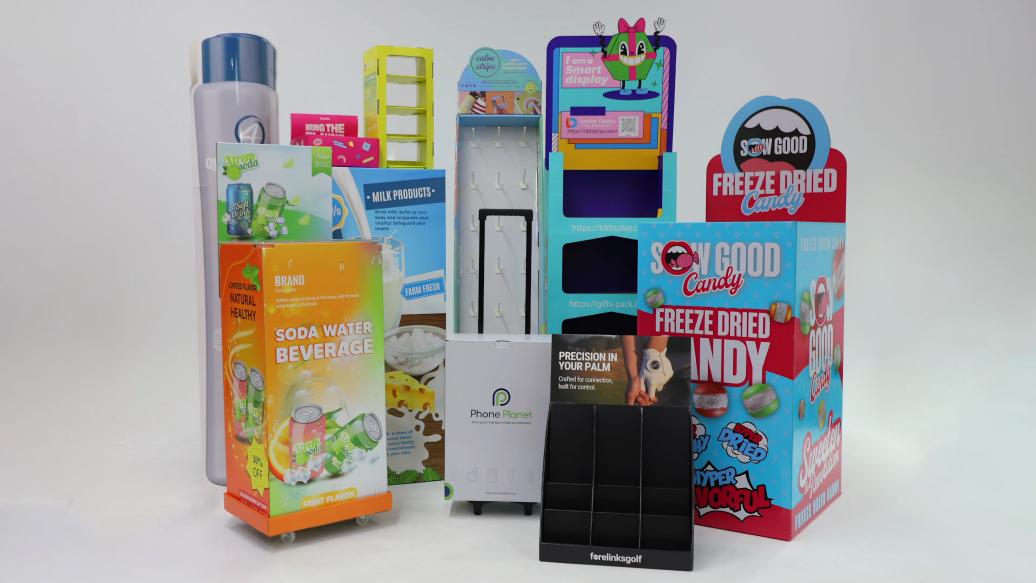Confused about which display is right for your product? Choosing the wrong one can lead to missed sales, while the right one can make your brand stand out.
Floor, counter, and pallet displays serve different functions based on size, location, and sales goals. Floor displays are versatile, freestanding units for promotions. Counter displays are small, driving impulse buys at checkout. Pallet displays are large, pre-stocked units for high-volume sales in main aisles.

In my 16 years in the cardboard display and packaging industry, I've learned that a display is much more than a shelf. It’s a silent salesperson working for you around the clock. The key is to match the display type to your specific strategy. To help you make the best choice, let's look at each one more closely.
What is a pallet in the retail industry?
You've seen those huge stacks of products in big-box stores, but you might not know what they are. This makes it hard to plan for large-scale promotions.
In retail, a pallet display1 is a large quantity of a single product shipped on a wooden or plastic pallet and placed directly onto the sales floor. These ready-to-sell units are designed for high-volume sales2 and are typically located in major aisles or at the front of the store.
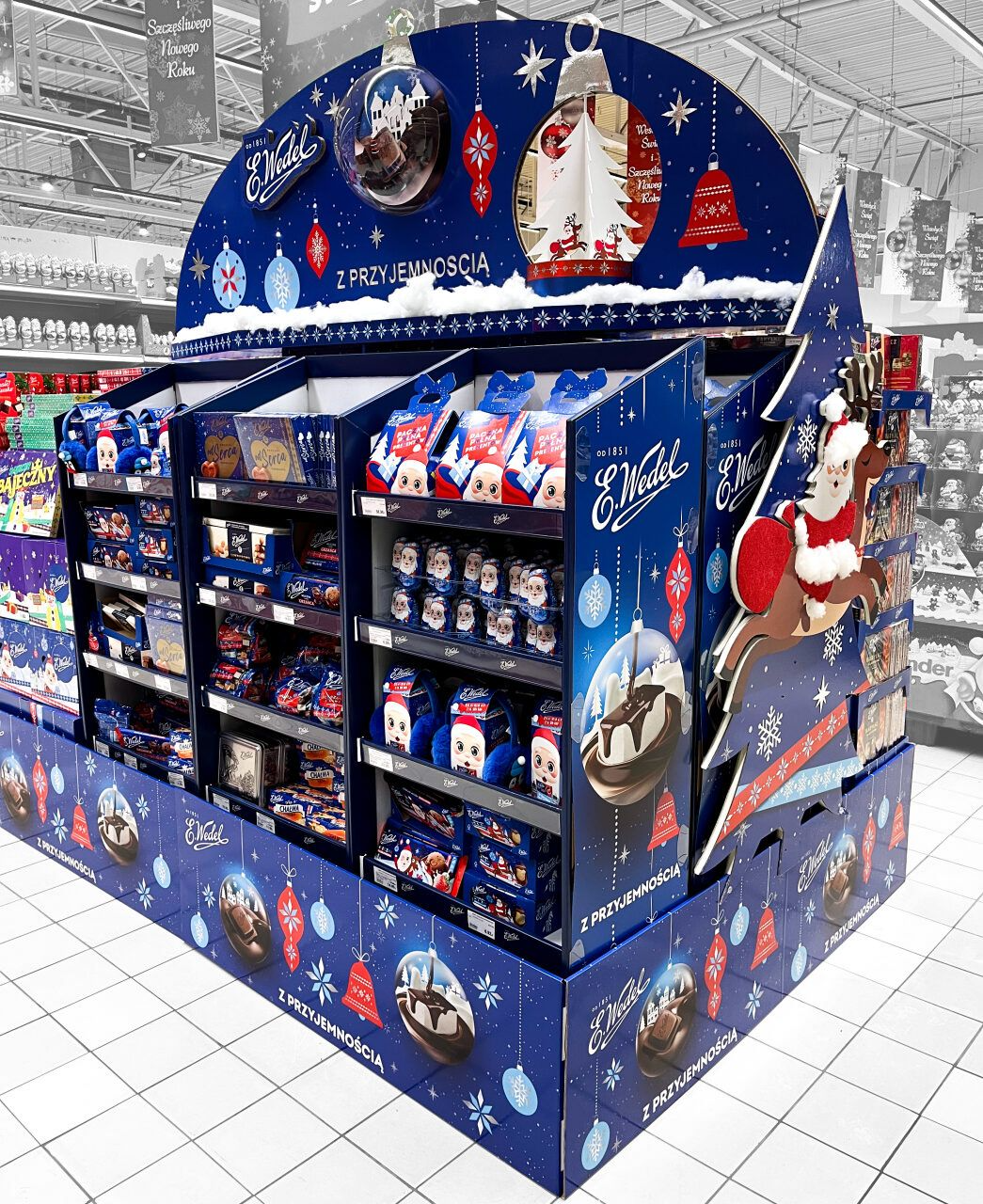
A pallet display1 is a workhorse of retail logistics3 and marketing. It’s designed for extreme efficiency. I remember working with a beverage client on a summer promotion. Their team was spending too much time unboxing products and stocking shelves. We designed a branded pallet display1 that arrived at the store ready to go. Store staff simply had to remove the outer wrap. This simple change cut their in-store setup time4 from 30 minutes per store down to just three. It was a game-changer for their national campaign.
The Anatomy of a Pallet Display
A pallet display1 has a few key parts. It starts with a standard wooden or plastic pallet base, which makes it easy to move with a forklift or pallet jack. The product is then stacked neatly on top. Finally, a decorative cardboard wrap, often called a "skirt" or "shroud," goes around the base and sometimes up the sides. This wrap contains all the branding, graphics, and pricing information. The whole thing is a self-contained selling machine.
Comparing Pallet Displays to Traditional Shelving
Pallet displays offer advantages that standard shelves just can't match, especially for certain types of products.
| Feature | Pallet Display | Traditional Shelving |
|---|---|---|
| Setup Time | Very Low (unwrap and place) | High (individual item stocking) |
| Product Volume | Very High | Limited to shelf space |
| Labor Cost | Very Low | High |
| Best For | Bulk items, seasonal sales | Variety, everyday items |
How do retail stores display their merchandise?
Walking into a store can feel chaotic, with products everywhere. But there's a clear strategy behind it. Understanding this system is the first step to getting your own product seen.
Retail stores display merchandise using a combination of permanent fixtures like shelves and temporary displays5. These temporary units, often made of cardboard, include floor stands, counter units, and pallet display1s. Each type is chosen to highlight promotions, new products, or drive impulse sales.
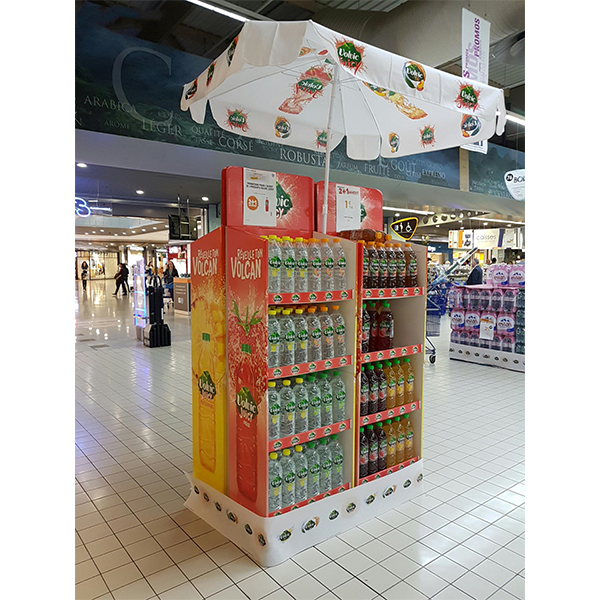
The way a store displays its products is a carefully planned journey for the customer. As a designer, my job is to create displays that fit perfectly into this journey. We have to think about both the store's permanent layout and the temporary promotional displays6 that brands like yours provide. A great design works in harmony with the store's environment to catch the shopper's eye at just the right moment.
Permanent vs. Temporary Displays
First, it helps to understand the two main categories of displays. Permanent fixtures are the metal shelving, gondolas, and refrigerated cases that belong to the store. They form the backbone of the store's layout. Temporary displays, or Point of Purchase (POP) displays7, are what my team and I specialize in. Brands pay for these custom-made units to showcase their products for a limited time, usually during a promotion, product launch, or season.
The Main Types of Temporary Displays
Within the world of temporary displays5, there are three main players you should know. Each one has a specific job to do.
| Display Type | Best For | Typical Location | Common Products |
|---|---|---|---|
| Floor Display | New products, brand stories | Aisles, Endcaps | Cosmetics, snacks, electronics |
| Counter Display | Impulse buys, small items | Checkout, service desks | Candy, batteries, gift cards, lip balm |
| Pallet Display | High-volume, bulk sales | Main aisles, store entrances | Soda, water, chips, seasonal goods |
I once worked with a startup snack company. They were getting lost on the shelf next to the big brands. We designed a freestanding floor display8 shaped like their fun brand mascot. We placed it at the end of the snack aisle, and it immediately stood out. Sales jumped 40% in the first month because it gave them a presence they never had before.
Why are displays so important in any retail environment9?
You have an amazing product, but it's sitting on a crowded shelf, unnoticed. Without visibility, even the best products can fail. A display gives your product its own stage to shine.
Displays are vital because they grab customer attention10, lift products out of the clutter, and drive sales. They interrupt a shopper's routine, communicate brand messages11, and trigger purchase decisions right at the point of sale, where most buying choices are finalized.
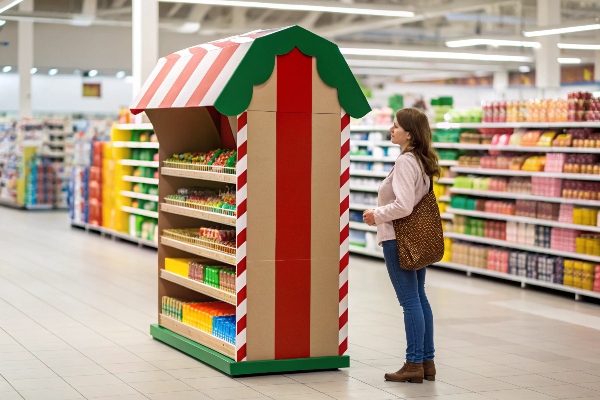
Think about a typical supermarket. It can have over 30,000 different products all competing for attention. A customer’s brain automatically filters most of them out. A custom display acts like a visual speed bump. It's a pattern interrupt that says, "Hey, stop and look at me!" In my experience, giving a product its own display, away from the main shelf, is one of the most reliable ways to increase sales. It’s not just about holding inventory; it’s about starting a conversation with the customer.
Breaking Through the Clutter
A display’s primary job is to be seen. It uses color, shape, and graphics to cut through the visual noise12 of a store. I've seen simple, well-designed displays double or even triple a product's sales rate13 just by moving it from the shelf to an endcap floor stand. It's the difference between being a face in the crowd and being the main speaker on a stage. Your product gets the spotlight.
The Display as a Communication Tool
Beyond just attracting attention, a display is your chance to educate the customer. You can't fit your whole brand story on a tiny price tag. But on a display, you have space for graphics, benefit callouts, and key information. We once designed a display for a new skincare line that had a small pocket for informational leaflets. This helped customers understand the science behind the product, building trust and encouraging them to try it.
| Function of a Display | Description | Impact on Sales |
|---|---|---|
| Attract Attention | Uses unique shapes, colors, and graphics. | Increases shopper traffic to the product. |
| Inform & Educate | Provides product benefits and key info. | Builds trust and overcomes purchase barriers. |
| Encourage Trial | Makes the product easy to grab and buy. | Drives impulse and first-time purchases. |
| Reinforce Brand | Uses logos and messaging consistently. | Builds recognition and long-term loyalty. |
What is the importance of retail racks, display, and location?
You've invested in a beautifully designed display, but sales are not what you expected. The problem might not be the display itself. Location is everything, and getting it wrong is a costly mistake.
The combination of the right display and the right location is essential. A brilliant display in a low-traffic corner is invisible. A premium location with a weak display is a wasted chance. Together, they create a powerful selling machine that maximizes exposure and boosts sales.
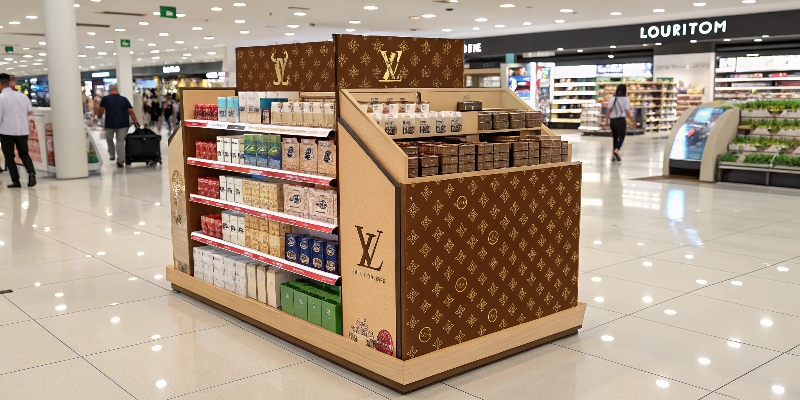
I always tell my clients to think of it as a power trio: the right product, the right display, and the right location. You need all three to work together. A great product can't sell itself if no one sees it. A great display is useless if it's hidden in the back of the store. The magic happens when an eye-catching display is placed in a high-traffic "prime real estate14" spot. It’s a formula for success, and every part of the equation matters.
Prime Real Estate in Retail
Certain areas in a store are naturally more valuable because they get more customer traffic. Negotiating placement in these spots is just as important as the display design15 itself. I had a client launching a new energy drink. We created a solid floor display8, but the key to their success was securing an endcap location right next to the checkout lanes. That premium placement guaranteed thousands of customer views every day and made their launch incredibly successful.
Matching Display Type to the Best Location
Different locations are suited for different types of displays. Placing the right one in the right spot maximizes its effectiveness.
| Location | Description | Best Display Type |
|---|---|---|
| Endcap | The high-visibility end of an aisle. | Floor Display |
| Checkout Counter | The point of payment. | Counter Display |
| Action Alley | The store's main, wide thoroughfare. | Pallet Display |
| In-Aisle | Directly within the product's category. | Floor Display or Shelf Extender |
Understanding this synergy between the display and its placement is fundamental. When you pitch your product to a retailer, you should be pitching a complete solution: a great product, presented in an effective display, designed for a specific, high-value location in their store.
Conclusion
Choosing between floor, counter, and pallet display1s depends on your product, campaign goals, and budget. Matching the right display to the right location is the key to retail success16.
-
Explore this link to understand how pallet displays can enhance product visibility and sales. ↩ ↩ ↩ ↩ ↩ ↩
-
Explore effective strategies to boost high-volume sales through displays. ↩
-
Learn about the role of logistics in retail to optimize your display strategies. ↩
-
Discover how reducing setup time can improve efficiency in retail environments. ↩
-
Understand the significance of temporary displays for promotions and product launches. ↩ ↩
-
Understand how promotional displays can drive sales and attract customer interest. ↩
-
Explore how POP displays can drive impulse purchases and enhance customer engagement. ↩
-
Learn how floor displays can effectively showcase new products and brand stories. ↩ ↩
-
Learn how to create an effective retail environment that enhances product visibility. ↩
-
Understand the psychology behind attracting customer attention with displays. ↩
-
Explore how effective displays can convey brand messages and build recognition. ↩
-
Discover strategies to cut through visual noise and make your display stand out. ↩
-
Learn about the key factors that can significantly impact sales rates. ↩
-
Discover the concept of prime real estate and its impact on display effectiveness. ↩
-
Explore best practices in display design to enhance product appeal and sales. ↩
-
Discover the essential elements that contribute to retail success through effective displays. ↩



